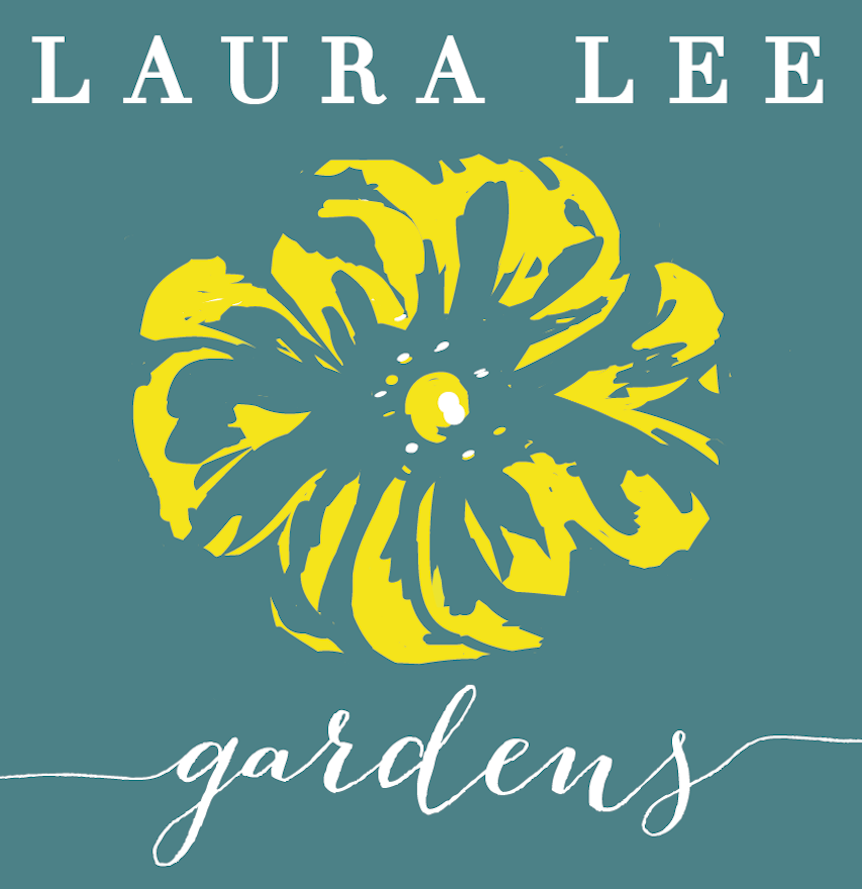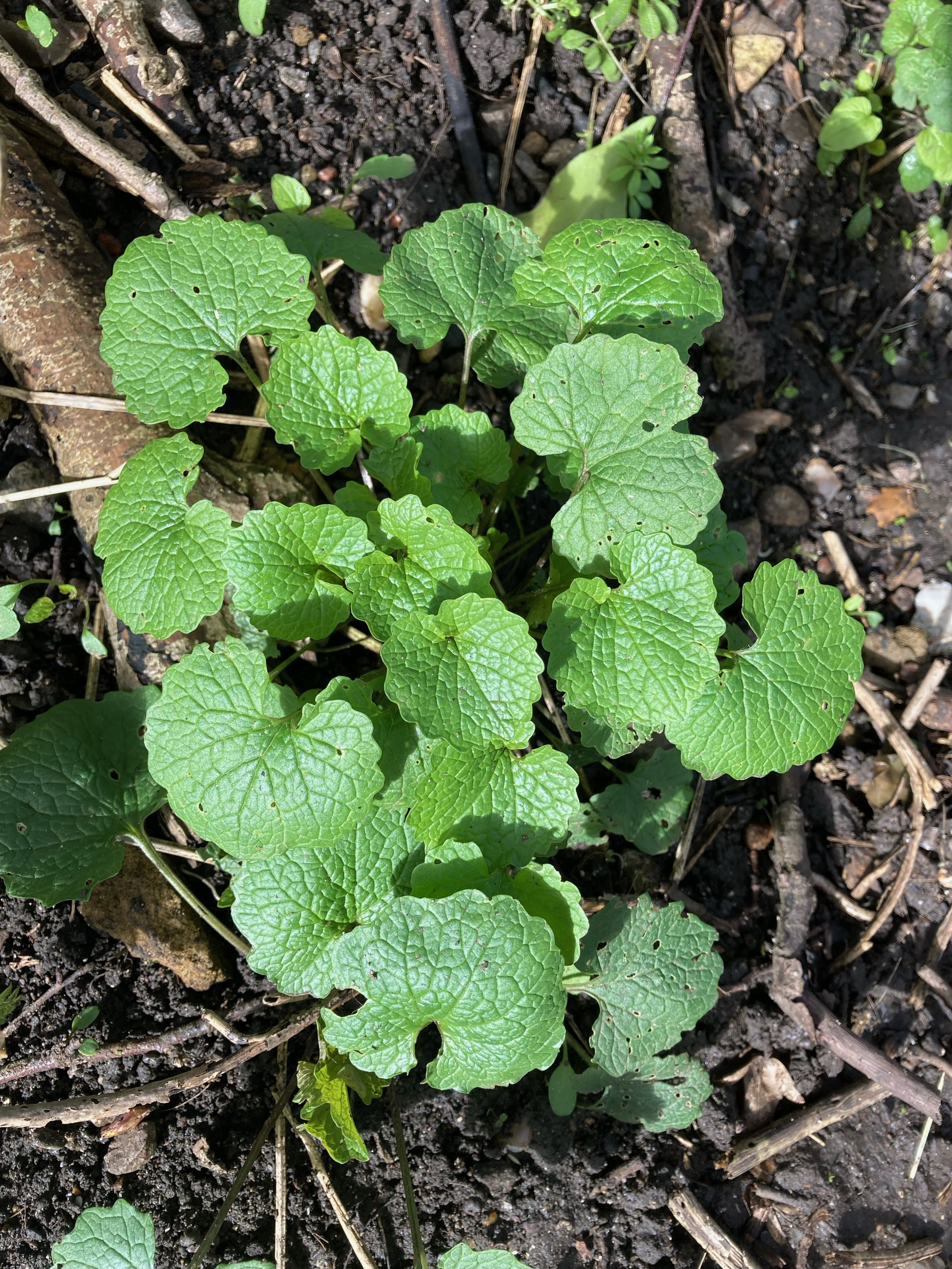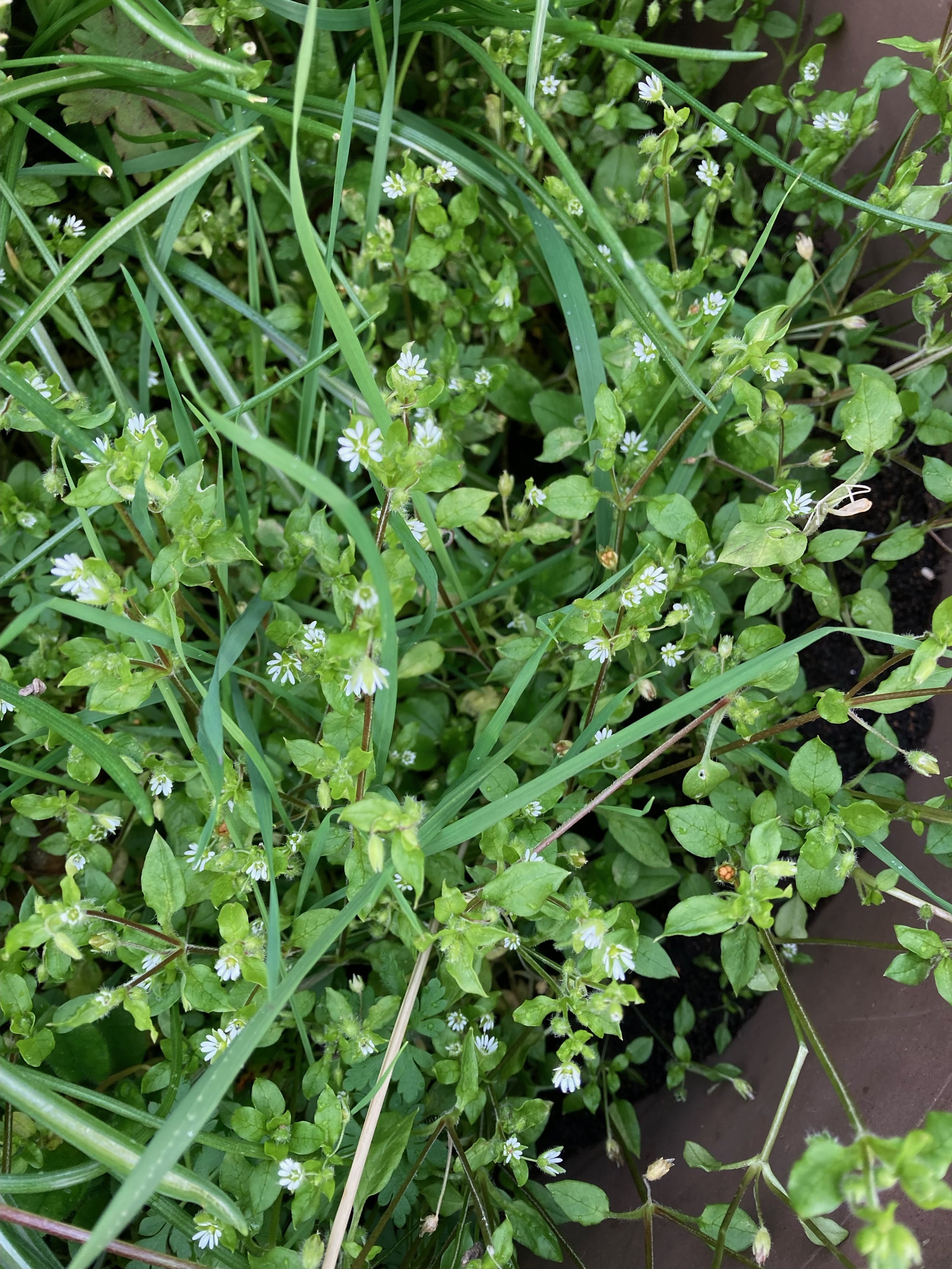My top 10 favourite deer resistant plants
Read moreIs it a weed?
One of the things I get asked most often by clients after their planting has been installed is how to tell the difference between a weed and a planted plant. It is really tricky for the novice gardener so I’ve compiled a bit of a rogue’s gallery for some of the more common types. I’ve also highlighted which ones are annuals (only come up once a year, easy to pull up) and perennials (much deeper roots, likely to be more invasive) and biennials (leaf rosette one year, flowers the next).
I like to have a reasonably generous approach to them. Some you will never truly eradicate (looking at you ground elder) and some are very beneficial to wildlife in the early part of the year such as Dandelions and Celandine. Try and have a wilder area of your garden where they can do their thing, it’s so good for pollinators. Hoeing is really the best way to keep on top of them as it doesn’t disturb the soil structure so much and always try and get to them before they set seed (create seedheads) - otherwise they really will be everywhere!
Some of the plants listed are known for being edible, but do not eat anything unless you are 100% sure of it’s provenance (and not just some snap I’ve taken on my phone!).
Ground elder. Perennial weed, spreads by large white roots which often appear as a nub above ground. Keep on removing the leaves, it will eventually weaken the plant although in my experience it is almost impossible to eradicate. DO NOT LET IT FLOWER in your border. But it will look very pretty in your wilder spaces. Brought here by by the Romans as an edible plant (young leaves), thanks for nothing Romans (apart from the roads and stuff). Bit of couch grass photobombing in the top left hand corner.
Wood avens, Herb Bennet or Geum urbanum. Very similar to cultivated Geums so if you have those in your garden then do get to know these! They tend to be a bit sprawlier than the cultivated type. Perennial so a deeper root system. Very pretty yellow flower so good for shady wilder spaces but weed out in your borders before they set seed.
Nipplewort. Comedy name, lovely delicate yellow flower in midsummer. Goes everywhere but it’s an annual so very easy to pull out.
Early leaves of Ground Ivy. This is a really important plant for early pollinators so unless it’s in your border, I would let it flower and then remove before it sets seed. It’s perennial but not too difficult to weed out.
Garlic mustard or ‘Jack in the Hedge’. Edible and really tasting of garlic! Either eat this plant into submission or weed it out as it will attempt world domination in your garden. If you have a very large space it can be pretty under trees. Biennial so leaves one year and flowers the next so easier to spot and control.
Lords & ladies or Arum maculatum. Perennial which is very toxic so definitely one to get rid of! Always wear gloves and dig this one out rather than hoeing. Joined in an unholy trinity by Bramble and Dog’s Mercury. Bit of early buttercup in the bottom right hand corner.
Cleavers or Sticky weed. Another edible which is high in Vitamin C but definitely one to keep an early control on in your garden before it runs amok!
The early leaves of Herb Robert, one of our native geraniums. This is a really pretty plant with bright pink flowers that is very easy to weed out of the places you don’t want it. One to leave in wilder spaces though.
Cow parsley and Dock leaves in a fight for supremacy. Both of these have very long tap roots so you definitely need to get a fork in if you want to remove them. Be prepared for that tap root to break off half way though.. grrrr. Cow parsley is a biennial and the dock is a perennial. Good luck with getting rid of either of them!
Creeping buttercup. Perennial. Actually quite a useful plant for us garden designers as it’s an indicator of damp soil, but definitely one to weed out of your borders!
Hogweed. Biennial. Another one with a tap root so can be difficult to remove. Gets enormous and the leaves can be very irritating to some people (it brings my son out in a rash) so try and deal with it while it’s still small. It seeds everywhere! So definitely chop any flowering heads off before they turn to seed.
Chickweed, otherwise known rather sweetly as Little Mouse Ears. Used as fodder for poultry and edible for humans too apparently. Annual and easy to pull out. Recognisable from its long branching stems as well as small pretty white flowers
Burdock. Grows into a huge plant with those really annoying sticky balls that get trapped in your dog’s hair (or your children’s when they insist on throwing them at each other!). The root has lots of medicinal uses and was famously used for the Dandelion and Burdock drink (do they still make that?!!). Biennial, so leaves one year and flowers the next. Really long tap root so difficult to eradicate I’m afraid.
Plants for Pollinators
It’s really important to me that my planting schemes provide something for beneficial insects like bees, butterflies and hoverflies to feast on for as long as possible throughout the year. This means not only things that flower but that can also be left standing over winter, providing seeds for birds and shelter for small bugs like ladybirds (who will eat all your aphids come Spring!). Inviting insects into your garden encourages an entire ecosystem, including frogs, toads and birds who will happily feast on your snails and slugs too and so a whole beneficial environment is created. As a general rule, insects prefer simple flower shapes such as daisies, bells and umbellifers like cow parsley and planting lots of different shaped flowers will encourage the biggest diversity of insects. Here are some of my favourite plants for year-round insect heaven.
Winter:
Phlomis russeliana – I love this as a vertical plant in the border in summer, but it really comes into its own in winter as the seedheads look gorgeous frosted and they provide shelter for overwintering insects. The leaves are evergreen.
Crocus tommasinanus – lovely in lawns before the first cut
Anemone nemerosa ‘Robinsoniana’ – excellent for naturalising under trees
Helleborus orientalis – beautiful blooms in the depths of winter
Sarcococca – plant near a path or doorway to enjoy its winter scent
Spring:
Primula vulgaris - such a cheerful plant which will be covered up by bigger herbaceous perennials as it finishes flowering
Symphytum orientale – brilliant for dry shade under trees, grow it where it can be free to roam
Euphorbia – really fabulous with early brightly coloured tulips
Malus (crab apples) – one of the best wildlife trees you can plant
Ajuga reptans – great on heavy clay
Fritillaria meleagris – beautiful mass planted in long grass
Single Tulips – look for varieties that have good perennial value. Some only last a year or two.
Early summer
Digitalis (Foxgloves) – always beautiful and there are perennial species as well as the usual biennial.
Lunaria annua (Honesty) – perfect for the cottage garden look
Geranium – there is a Geranium for every site and situation and they can work in modern gardens too
Alliums – fab for punctuating a border and the purples work really well with zingy greens. Dried heads can be left on all summer.
Astrantias – one of my favourites and a beautiful pollinator plant. Needs some moisture in the soil to do really well.
Mid to late summer
Achilleas – brilliant for hot dry areas
Knautia macedonica – gorgeous colour and beautiful in naturalistic planting schemes
Daucus carota ‘Dara’ – purple form of the wild carrot, easy to grow from seed
Gaura lindheimeri – lovely with grasses
Origanum laevigatum ‘Herrenhausen’ – beautiful dark purple form of the herb. Evergreen foliage.
Erigeron karvinskianus – lovely for edging borders, in a sheltered spot can flower on and off all year
Persicaria – bulletproof plant for tricky situations
Salvia – can be tender so look for varieties that can cope with a cold winter
Echinacea – best in full sun, the seedheads can be left over winter to provide food and shelter for wildlife
Verbena bonariensis – can seed itself around but easy enough to control and beloved by butterflies. Lovely in a late summer garden with tall grasses.
Autumn
Anemone x hybrida – leaves emerge in early Spring and it flowers well into Autumn so a great plant for long interest. Also good in tricky situations such as dry shade.
Aconitum carmichaelii – amazing blue when everything else is going over
Campanula poscharskyana – will have been flowering most of the summer. Great for edging and spilling over walls
Symphyotrichum (Michaelmas daisys) – can need a bit of management not to run riot but for late autumn colour they are fabulous.
Designing a family garden
When you have young children, the garden can feel like a playground just for them. Filled with brightly coloured play equipment, footballs and scuffed turf it can become a very uninspiring place for you to relax in. But by creating different areas for everyone in the family, you can carve out room for yourself as well as your children so that everyone can enjoy their outdoor space.
Think about the overall size of your garden and how much space you want to allocate for time together as a family. Patios should be generous to allow for a decent sized dining area. Ask yourself how much room you’ll need for a children’s play area, and whether you could squeeze in a more grown-up zone too, perhaps for drinks at the end of the day away from the house. Then think about what you could use to divide these areas up. Simple paths and flower borders can work really well, or you could use natural screening such as small trees, tall grasses or hedges.
Think also about your view from the house. If you have young children you probably want to be able to see what they’re doing, but it’s good to be able to let them out there without constant supervision so site any play areas where you can see them. Consider using wooden or metal screens or pergolas, which could support climbing plants as these can provide a more ‘see through’ partition in the garden for when you still need to see what the kids are up to. If you have older children, you might prefer to have a more beautiful view out, with their play area more hidden within the garden.
If possible, try and think also about how those areas could evolve as your children get older so that you don’t have to reconfigure things every couple of years. Climbing frames and other fixed play equipment is great when the children are small but can really dominate family gardens. Think about whether equipment you can just put away for the winter (or even at night) might do and incorporate good storage into your plans so that things can be tidied away. Trampolines are really great, long lasting play spaces, but do think about having one built into the ground rather than just keeping it on its base as you will probably be looking at it for at least five years! Inground trampolines can also be softened with planting and become much less of an eyesore in an otherwise lovely garden.
There are also lots of low-cost things you can do in the children’s play area. Willow houses and tunnels are relatively cheap and easy to construct and can provide a really naturalistic play space if that is your design style. Muddy kitchens are also easy to build with old pots and pans and some sanded down pallets. Wood can be painted with blackboard paint and a waterproof box of chalks left out. Outdoor tracks for cars and toy trucks are easily made. Dens are also really lovely in the summertime (and the winter if you have that kind of child!). Outdoor wigwams can be bought but you can also make your own with wooden poles and waterproof canvas. Fill them with cushions and blankets and you have a lovely space for reading or drawing.
Finally, make sure any materials you use blend in with the colour and style of the exterior of your house and keep the number of different materials you use to around three or four. This will help to create some continuity between your interior and exterior style and ensure your garden sits comfortably within the design of your house, becoming a true extension of your home.
Why hire a Garden Designer?
If you’re looking at your garden and you’re just not sure where to start, a garden designer can really help you look at your outside space with fresh eyes. Gardens can feel a bit of a burden and they are often the last thing that people think about when decorating their home, but over the past year I think we’ve all come to realise how important they are for our sense of well-being.
You might need better play space for the children, a cosy corner for adults to relax in or a combination of these things. We’re trained to look at your outdoor space and think about how it can work functionally and blend with your style. We think about maximising views, creating privacy from neighbours and we are experts in making sure your garden has balance in terms of structures and planting. We also recommend plants that give your garden softness, fragrance, good winter bone structure and which will thrive in your specific conditions. We design planting schemes that keep your garden looking good all year round and which can be as low or high maintenance as you would like. Having your garden designed should make it an easier space to take care of, as it is created for you with your requirements in mind.
The cost of garden design is always a key question for clients and it can be hard to put a definitive figure on as it is so dependent on how much of a change you want to make. I suppose a good comparison is whether you choose to get your kitchen from Neptune or Ikea! But I always make sure that clients are guided as to what’s achievable for the budget they have. Moving earth and laying new paving can be very expensive but smaller changes can be made which make a big difference and sometimes changing planting or extending borders can be enough to create a more beautiful space.
For a basic guide to garden build costs, including labour, I usually estimate around £75 per m2 for plants and planting (excluding trees and very large shrubs) and a minimum of £175 per m2 for hard landscaping (patios, paths etc). These figures are very much a guideline however and will depend on the complexity of your site, what you want to achieve and what kind of materials you prefer to use.
Creating a garden is a considerable investment, so I make sure that materials and planting are affordable and offer long term value.
Although the cost of building your garden can be variable, the cost of your garden designer will be fixed and they should tell you exactly how much they will cost before any work commences. Some designers charge a percentage of the overall build cost of the garden, whereas some, like myself, have a cost based on the complexity of the job involved. Even a small design can take four weeks of work if the space is complicated; from initial meeting to Masterplan, Construction Drawings and Planting Plans and so costs are scaled accordingly.
In the last year the positive effects of having outdoor space and being out in nature have really come to the fore. A beautiful garden that works for all the family will not only add significant value to your home but really improve your quality of life. And a well-designed and beautifully planted outdoor space is a long-lasting investment that can only enhance your love for your home.
Winter Gardening
Winter gardening jobs and why you should try and get outside
Read more












